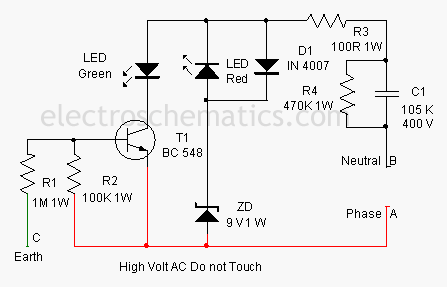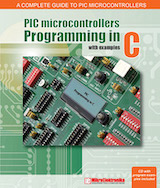Automatic Train Operation(ATP)
So far, we have only seen how ATP systems work on metros. ATP is the safety system which ensures that trains remain a safe distance a part and have sufficient warning to allow them to stop without colliding with another train. ATO (Automatic Train Operation) is the non-safety part of train operation related to station stops and starts.The basic requirement of ATO is to tell the train approaching a station where to stop so that the complete train is in the platform. This is assuming that the ATP has confirmed that the line is clear. The sequence operates as shown below.
London's Victoria Line, now 35 years old, has up to 13 "patches" checking the train speed as it brakes into a station. This high number of checks is needed because the on-board braking control gives only three fixed rates of deceleration. Even then, stopping accuracy is ± 2 metres. A detailed description of the Victoria Line's ATO system is here. Modern systems require less wayside checking because of the dynamic and more accurate on-board braking curve calculations. Now, modern installations can achieve ± 0.15 metres stopping accuracy - 14 times better.
Metro Station Stops
ATO works well when the line is clear and station run-ins and run-outs are unimpeded by the train ahead. However, ATO has to be capable of adapting to congested conditions, so it has to be combined with ATP at stations when trains are closely following each other. Metro operation at stations has always been a particular challenge and, long before ATO appeared in the late 1960s, systems were developed to minimise the impact when a train delayed too long at a station.
To provide a frequent train service on a metro, dwell times at stations must be kept to a minimum. In spite of the best endeavours of staff, trains sometimes overstay their time at stations, so signalling was been developed to reduce the impact on following trains. To see how this works, we begin with an example (left) of a conventionally signalled station with a starting Signal A1 (green) and a home Signal A2 (red) protecting a train (Train 1) standing in the station. We can assume mechanical ATP (trainstops) is provided so the overlap of Signal A2 is a full speed braking distance in advance of the platform.
As Train 2 approaches, it slows when the driver sees the home Signal A2 at danger. Even if Train 1 then starts and begins to leave the station, Signal A2 will remain at danger until Train 1 has cleared the overlap of Signal A1. Train 2 will have to stop at A2 but will then restart almost immediately when Signal A2 clears. This causes a delay to Train 2 and it requires more energy to restart the train. A way was found to allow the second train to keep moving. It is called multi-home signalling.
Multi Home Signalling - Approach

Where multi-home signalling is installed at a station (left), it involves the provision of more but shorter blocks, each with its own signal. The original home signal in our example has become Signal A2A and, while Train 1 is in the platform, it will remain at danger. However, Block A2 is broken up into three smaller sub-blocks, A2A, A2B and A2C, each with its own signal. They will also be at danger while Train 1 is in the platform. Train 2 is approaching and beginning to brake so as to stop at Signal A2A.
When Train 1 begins to leave the station, it will clear sub-block A2A first and signal A2A will then show green. Train 2 will have reduced speed somewhat but can now begin its run in towards the platform.
Multi Home Signalling - Run In

At this next stage in the sequence, we can see (left) that Train 1 has now cleared two sub-blocks, A2A and A2B, so two of the multi-home signals are now clear. Note that the starting signal is now red as the train has entered the next block A1. Train 2 is running towards the station at a reduced speed but it has not had to stop.
When Train 1 clears the overlap of signal A1, the whole of block A2 is clear and signal A2C clears to allow Train 2 an unobstructed run into the platform.
ATO/ATP Multi Home Signalling

Fixed block metro systems use multi-home signalling with ATO and ATP. A series of sub-blocks are provided in the platform area. These impose reduced speed braking curves on the incoming train and allow it to run towards the platform as the preceding train departs, whilst keeping a safe braking distance between them. Each curve represents a sub-block. Enforcement is carried out by the ATP system monitoring the train speed. The station stop beacons still give the train the data for the braking curve for the station stop but the train will recalculate the curve to compensate for the lower speed imposed by the ATP system.
ATO Docking and Starting

In addition to providing an automatic station stop, ATO will allow "docking" for door operation and restarting from a station. If a "driver", more often called a "train operator" nowadays, is provided, he may be given the job of opening and closing the train doors at a station and restarting the train when all doors are proved closed. Some systems are designed to prevent doors being opened until the train is "docked" in the right place. Some systems even take door operation away from the operator and give it to the ATO system so additional equipment is provided as shown left.
When the train has stopped, it verifies that its brakes are applied and checks that it has stopped within the door enabling loops. These loops verify the position of the train relative to the platform and which side the doors should open. Once all this is complete, the ATO will open the doors. After a set time, predetermined or varied by the control centre as required, the ATO will close the doors and automatically restart the train if the door closed proving circuit is complete. Some systems have platform screen doors as well. ATO will also provide a signal for these to open once it has completed the on-board checking procedure. Although described here as an ATO function, door enabling at stations is often incorporated as part of the ATP equipment because it is regarded as a "vital" system and requires the same safety validation processes as ATP.
Once door operation is completed, ATO will then accelerate the train to its cruising speed, allow it to coast to the next station brake command beacon and then brake into the next station, assuming no intervention by the ATP system.
Sidharthan G
electricalmiracles.







